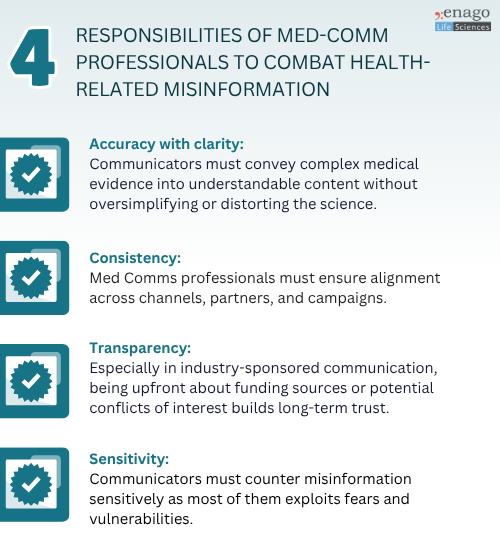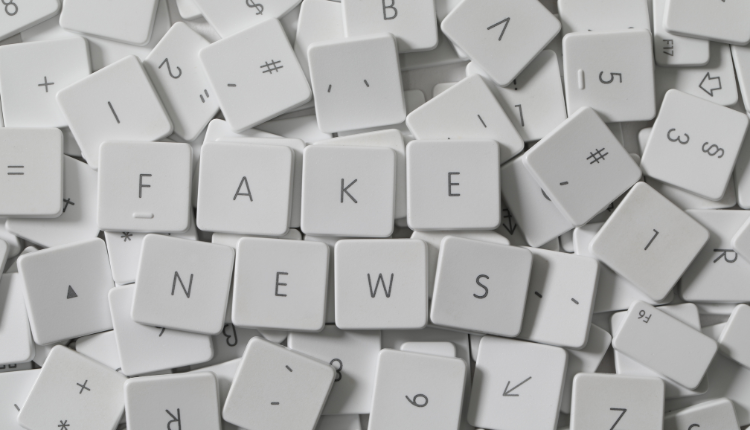In today’s hyper-connected world, misinformation travels faster than truth. Social media has boosted the communication and reach of ideas and individual views. A single tweet or a well-written LinkedIn post can reach thousands within hour. While this visibility and quick access to information has bridged the gap between layman and healthcare professionals, it risks rapid spread of health misinformation. From miracle cures to vaccine myths, false claims about health are not just digital noise, they carry real-world consequences.
The COVID-19 pandemic highlighted this reality on a global scale. Claims about injecting bleach or miracle cures went viral, vaccine misinformation led to hesitancy, and misinformation-laden WhatsApp forwards shaped decisions in many communities. The consequences were severe: delayed treatment, preventable deaths, and widespread erosion of trust in science. As per the data on WHO website, approximately 6,000 people globally were hospitalized and about 800 people died due to COVID-19 related misinformation in the first three months of 2020 alone!
The Rise of Health Misinformation
Health misinformation is not new or solely attributed to the digital noise. Examples like “anti-vaccine movements” and “miracle cancer cures” have existed for decades. What changed with social media was scale and speed.
Traditionally, misinformation spread slowly through word of mouth, pamphlets, or niche communities. A 2022 study found that health-related misinformation accounted for anywhere between 0.2% and 28.8% of social media content. Platforms such as Twitter, Facebook, YouTube, and Instagram play a central role in enabling the rapid and wide-scale spread of such information. Today, a single TikTok video or Facebook post can reach millions overnight. Algorithms reward emotionally charged content, echo chambers reinforce beliefs, and influencers with no medical background can rival scientists in reach. Consider how YouTube influencers promoted unproven wellness products during the pandemic, or how Facebook groups amplified anti-vaccine content to millions. Platforms designed to connect people have unintentionally become powerful amplifiers of misinformation. The result: Misleading health claims circulating at unprecedented speed, often outpacing fact-based corrections and research.
Why Health Misinformation Spreads So Easily?
Understanding why misinformation thrives is essential before strategizing against it. Several factors drive its spread:
- Psychology: People lean toward simple, emotionally charged messages. Fear and certainty are powerful motivators, while scientific evidence often feels complex and uncertain. For example, “This herb cures cancer” is far more attractive than “This treatment has a 30% efficacy rate in clinical trials.”
- Structural Barriers: Scientific studies are often locked behind paywalls or written in complex language. In regions with low health literacy, people rely on informal networks and social media, where misinformation flourishes.
- Trust deficit: Skepticism toward governments, pharma, and experts fuel reliance on alternative sources. When people distrust institutions, they turn to influencers, friends, or community leaders, regardless of their expertise.
In this landscape, medical communication (Med Comms) professionals have emerged as critical defenders of evidence-based truth. Beyond simply conveying information, they have the responsibility to build trust, translate complex science into accessible language, and actively combat the misinformation epidemic.
The Ethical Responsibility of Med Comms Professionals
Med Comms professionals are uniquely positioned at the intersection of science, healthcare, and the public. With that position comes responsibility:

There are several inspiring examples of effective communication campaigns against misinformation. One notable example is WHO’s “Covid-19 myth busters” initiative during COVID-19, which used simple, shareable graphics to debunk false claims on masks, vaccines, and cures. Their content was widely translated and localized.
How can Med Comms professionals actively combat misinformation? Several approaches have proven effective:
1. Simplify, don’t dilute
Use plain language, engaging visuals, and storytelling methods to make evidence-based information accessible and garner interest. A patient-friendly infographic often outperforms a technically-dense PDF.
2. Collaborate widely
Work with healthcare providers, journalists, regulators, and fact-checkers. Multi-stakeholder collaborations amplify credibility and reach.
3. Use technology
AI-driven tools can monitor trending misinformation, flagging emerging narratives before they spiral out of control.
4. Engage communities
Instead of simply “correcting” misinformation, actively engage with communities to build trust. Partnering with local leaders or influencers often resonates more than top-down messaging.
5. Educate proactively
Beyond myth-busting, focus on building health literacy. Empowering people to evaluate sources critically reduces their vulnerability to false claims.
Tips for Early-Career Med Comms Professionals
For those just beginning in the field, combating misinformation may feel daunting. However, it can be a deeply rewarding experience, when approached correctly. Here are some practical strategies to get started:
-
Check your sources actively:
Prioritize peer-reviewed literature, PubMed, and trusted organizations (WHO, CDC).
-
Spot the red flags:
Be cautious of sweeping claims, miracle cures, or anecdotal evidence presented as fact.
-
Write with empathy:
Avoid confrontational tones and acknowledge concerns while presenting facts clearly. Patient-centered narratives are often more persuasive than raw data.
-
Balance data and narrative:
While statistics can strike the chord with healthcare specialists, it may not sit well with layman audience. Use stories to bring numbers to life as patients relate more to experiences than statistics.
-
Stay updated:
Join networks like EMWA, ISMPP, or MedComms groups to stay sharp. Regularly monitor trending health topics and misinformation patterns.
Early-career professionals who cultivate these habits will not only spot misinformation faster but also communicate truth more persuasively. Ultimately, the goal is not just to correct falsehoods but to nurture an ecosystem where truth has the advantage.
Health misinformation is one of the most pressing challenges of our time. It reduces trust, endangers lives, and strains healthcare systems. Yet it also presents an opportunity—a chance for Med Comms professionals to step up as stewards of truth and champions of trust.
By combining scientific rigor with empathy, clarity, and creativity, Med Comms professionals can bridge the gap between complex research and public understanding. They can ensure that accurate, evidence-based information not only competes with misinformation—but prevails.
Because when it comes to health, misinformation cost lives. And accurate, ethical communication saves them.
Author:

Anagha Nair
Editorial Assistant, Enago Academy
Medical Writer, Enago Life Sciences
Connect with Anagha on LinkedIn

